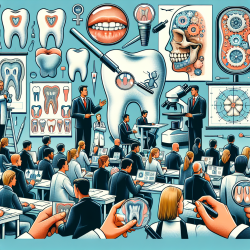Introduction
In the ever-evolving field of forensic science, staying abreast of the latest research and developments is crucial for practitioners aiming to enhance their skills and maintain the integrity of their work. The research article "Epidermis and Enamel" provides a comprehensive overview of the criticisms and advancements in the field of forensic odontology, particularly concerning bitemark evidence. This blog aims to inspire practitioners to delve deeper into the findings and implications of this research, encouraging further exploration and application in their professional practice.
Understanding the Criticisms
The article highlights the criticisms faced by forensic odontologists regarding the management of bitemark evidence. Critics have labeled it as "junk science" due to past errors and the lack of sensitivity and specificity in linking bitemarks to perpetrators. However, it's essential to recognize that many of these errors occurred decades ago, and significant advancements have been made since then. By understanding these criticisms, practitioners can better appreciate the importance of continuous improvement and the adoption of conservative guidelines and standards.
Embracing Advancements
Forensic odontology has undergone significant transformations to address past errors and enhance the reliability of bitemark evidence. The implementation of comprehensive root analysis of problem cases, the development of quality assurance procedures, and the adoption of conservative approaches are some of the advancements that have been made. These changes have been instrumental in reducing biases and ensuring that bitemark evidence is managed with the utmost care and precision.
The Role of Practitioners
As practitioners, it is crucial to actively engage with the latest research and developments in forensic odontology. By doing so, you can enhance your skills, improve the accuracy of your analyses, and contribute to the overall credibility of the field. Here are some ways you can implement the outcomes of the research presented in "Epidermis and Enamel":
- Stay informed about the latest guidelines and standards in forensic odontology to ensure your practices align with current best practices.
- Engage in continuous professional development through workshops, seminars, and conferences to expand your knowledge and skills.
- Collaborate with other forensic professionals to share insights and experiences, fostering a culture of learning and improvement.
- Conduct further research to explore new methodologies and techniques that can enhance the accuracy and reliability of bitemark evidence analysis.
Encouraging Further Research
The research article "Epidermis and Enamel" serves as a valuable resource for practitioners seeking to deepen their understanding of forensic odontology. By encouraging further research, practitioners can contribute to the ongoing evolution of the field and ensure that bitemark evidence remains a relevant and reliable tool in the justice system.
Conclusion
In conclusion, the insights presented in the research article "Epidermis and Enamel" offer a wealth of knowledge for forensic odontologists. By embracing advancements, engaging in continuous professional development, and encouraging further research, practitioners can enhance their skills and contribute to the integrity of forensic odontology. To read the original research paper, please follow this link: Epidermis and Enamel.










